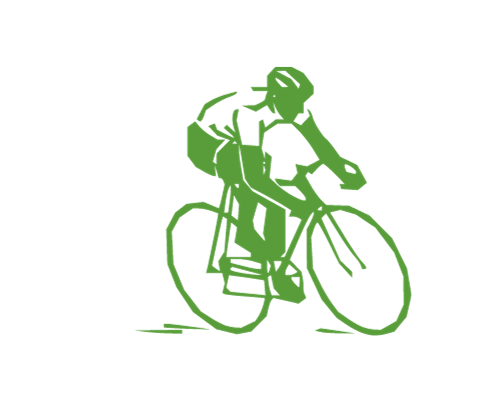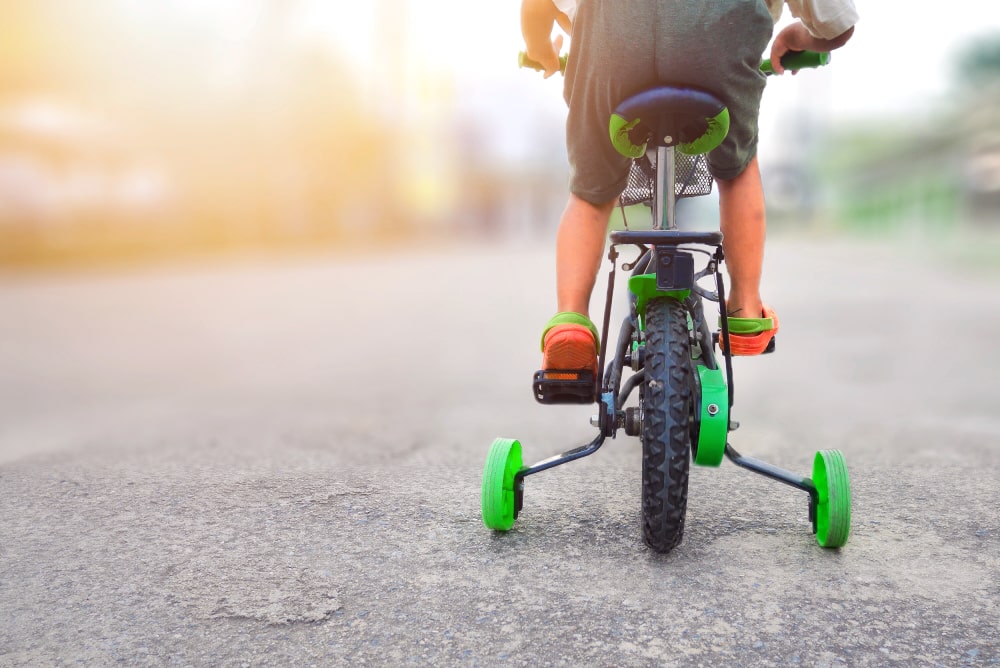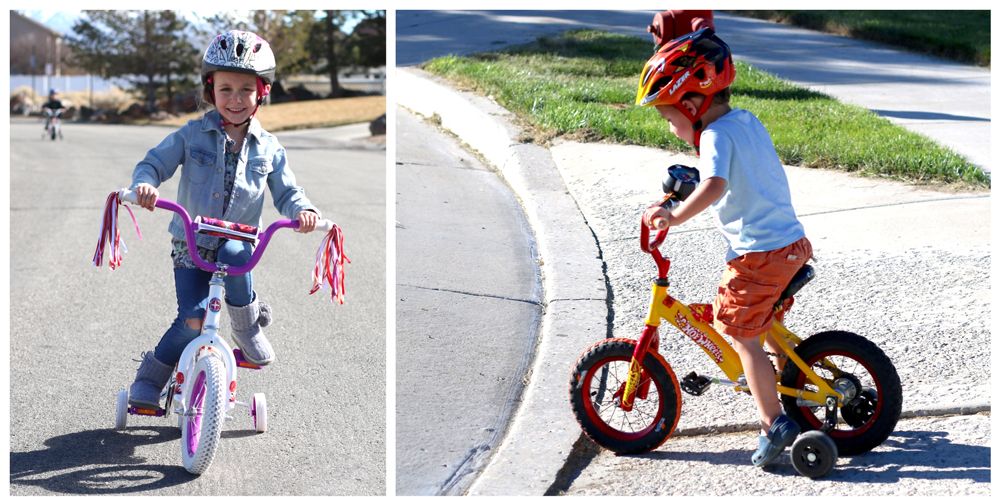
Training wheels are a good solution to teach your child how to ride a bike. Their disadvantage is that they can mislead the novice cyclist, not allowing him to acquire the necessary skills to control the bike. Thus, the young rider becomes confused about how to properly handle the bike.
But despite this, many parents choose kids’ bikes with training wheels as good support for their child on the road while learning. At the same time, they have a lot of questions. This article is a professional guide on everything you need to know about training wheels, where you will find the right answer to the question of are training wheels supposed to touch the ground.
Are Training Wheels Supposed to Touch The Ground?
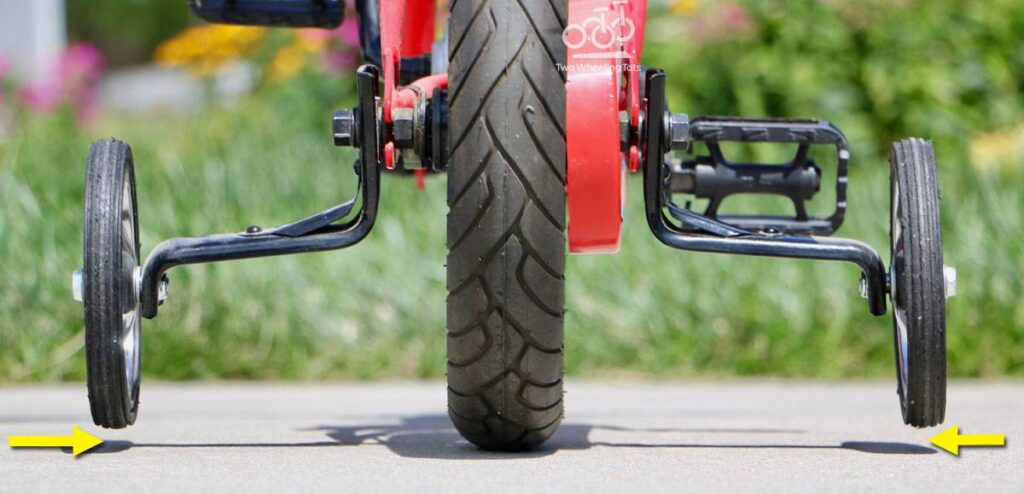
The answer is NO! Training wheels are mounted on the rear wheel of the bike slightly above ground level. They can never touch the surface at the same time, so from the outside, they look uneven.
This means that the child has to move at an incline so that one of the wheels is in contact with the ground. This trick teaches the baby to ride a bike smoothly and keep the balance on two wheels.
Besides, if all three wheels were on the same level, it would be impossible to keep the heavy-duty training wheels on the rear tire of the bike. It would not be able to maintain proper traction.
At what age should your child use training wheels
There is no single exact age suitable for teaching kids to ride a bike with training wheels. The most basic thing is to start when your child takes the initiative to do so. Of course, your child should have sufficient coordination, balance, and physical development.
As a rule, a child is ready to ride a bike with training wheels by 3-5 years old. The main thing is to find a bike among the abundance of kids’ bikes, which can be quite difficult. Specialized training wheels are considered successful if the child can put both feet on the ground in a sitting position.
This hobby is very beneficial for the baby and will allow him to develop the necessary skills and strength before he gets on a pedal bike without training wheels.
How do training wheels work?
Whether your child needs training wheels or not is up to you. If your child has already started bike riding and has been doing quite well, there is no need for the device. But if your child is just beginning to master riding a bike, then this device will only help him. They will help him maintain stability while he is confidently pedaling. It is essential to install the device correctly to avoid traumatic situations.
When properly installed, these wheels are higher than the rear tire, do not touch the ground, and provide the child with good support. Install the training wheels slightly above the tire, this will achieve a comfortable ride. When balancing, the attachment will support the vehicle and give it stability.
If the weight of the child and the kid’s bike is on the training wheels, then the speed tire may not provide the necessary traction, and the braking power is weakened.
Features of proper training wheels installation:
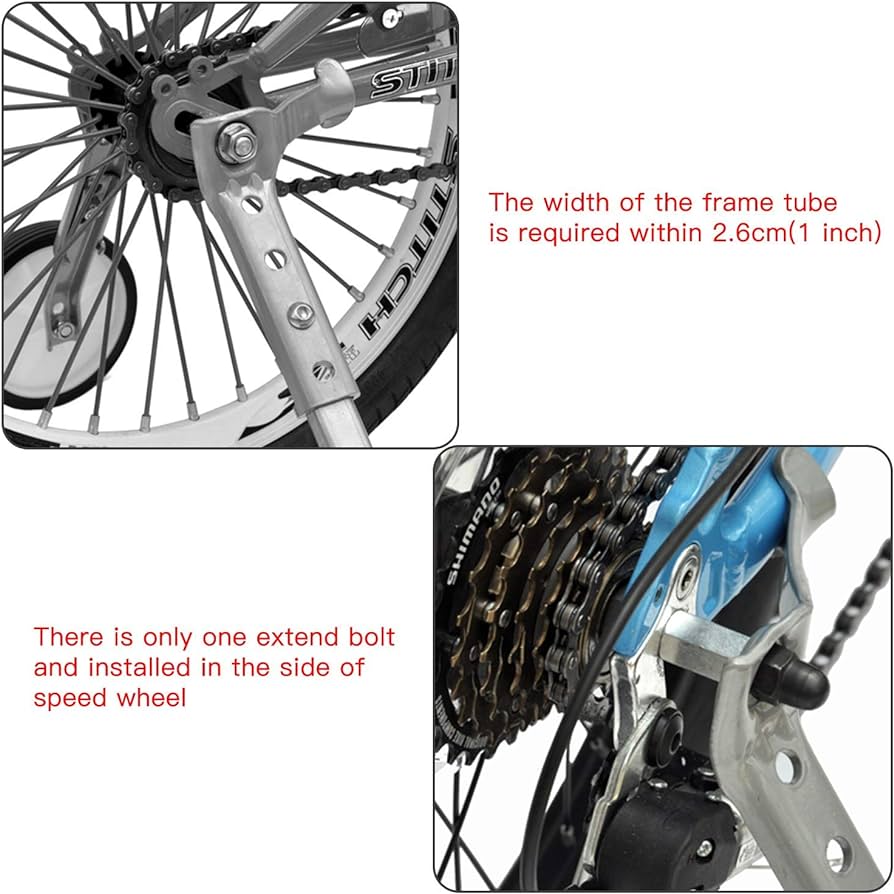
Be sure that your kids’ bikes and training wheels are compatible. Most kids’ bikes at big box stores come pre-installed with these wheels. High-end bikes are not equipped with such devices. In this case, you don’t need to do anything.
If you already have a bike, you can simply add training wheels to it. Most higher-end bikes will fit with training wheels without a problem. To know this for sure, you need to check the specifications. Some models are not compatible with most training wheels.
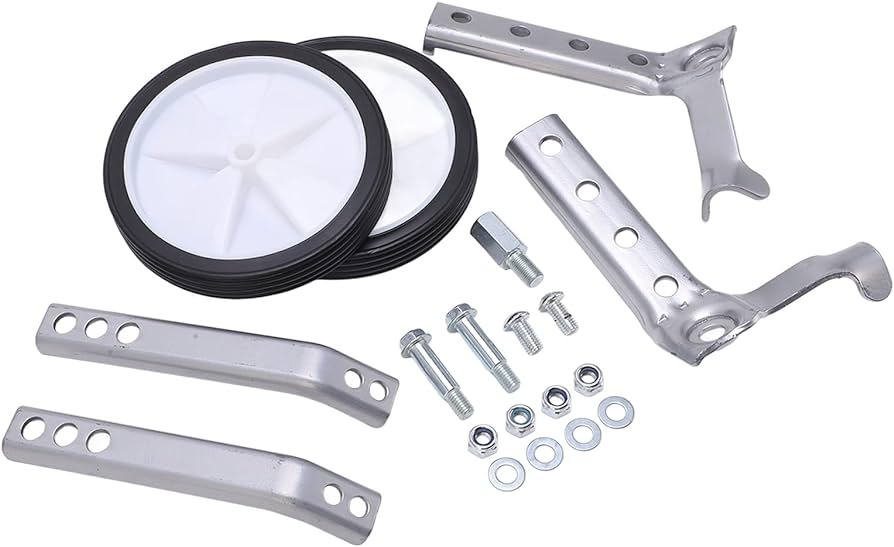
First of all, make sure that the front and rear wheel has the same amount of pressure. To attach the wheel, you must strictly follow the instructions that come with the wheels. To install training wheels rear axle must be long. It must be able to support the training wheel bracket as well as the parts to attach it.
The bolts between the bike’s rear tire and the inside of the bike frame do not support the training wheels. If the rear axle of the kid’s bike is not long enough, you cannot attach training wheels to the bike.
If you want to adjust training wheels, you must first loosen the nuts and set them to the right position, then tighten them(the configuration is important because it would be difficult to maintain the weight on the bike’s rear tire if the training wheels and the rear wheels all touched down at once).
Once the axle bolts are loosened, raise the bike to an upright position and adjust the wheels so that they are approximately 6 mm off the ground. See how the child moves with the training wheels attached. If the child is not comfortable, you can lower the wheels slightly to give the young cyclist more support. As the biker’s confidence on the road increases, you can gradually raise the device until you remove it completely.
This should be done when the child is confident on the bike. In general, the main purpose of training wheels is to support the novice cyclist so that he or she does not fall while learning.
Will training wheels be put on the 24-inch bike?
Most models of 24-inch bicycles do not have a rear axle long enough to fit a training wheel.
In these cases, you will usually choose a specialized training wheel that attaches to the frame of the bike.
If your bike is equipped with a rear derailleur, its training wheels should be mounted to the frame, not the axle.
What you need to use training wheel bikes
First of all, you will need the wheels themselves and the bike. You can buy a bike with training wheels, which you will remove as soon as the child learns to ride a bike and will be ready to move to a bike without training wheels.
The most important thing is the size and fit. Suitable transport for the height of the baby will be comfortable and convenient for him in terms of control.
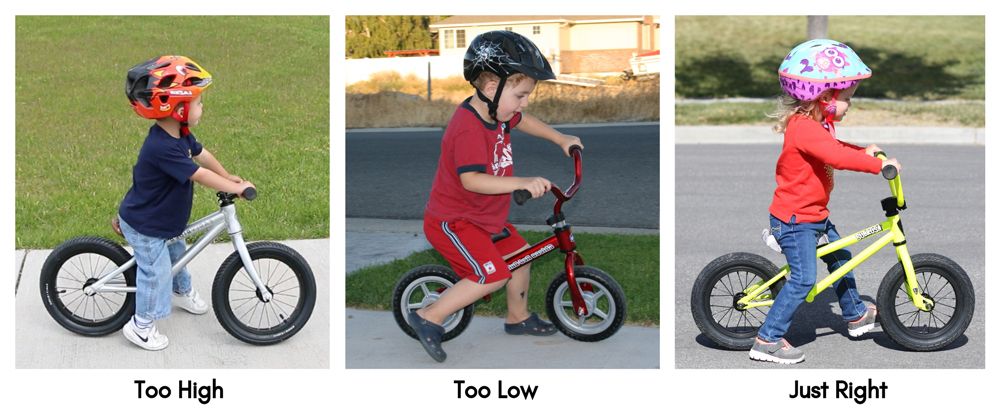
In addition, a young cyclist needs a protective helmet. This is a very important element of equipment, not only to provide protection on the road but also to instill a useful habit that will remain with the cyclist in adulthood.
It also makes sense to buy protective gear in the form of kneepads and elbow pads. This is not mandatory, but if you fall, this equipment will prevent injury, especially in the early days of riding.
How to teach kids to ride training wheel bikes
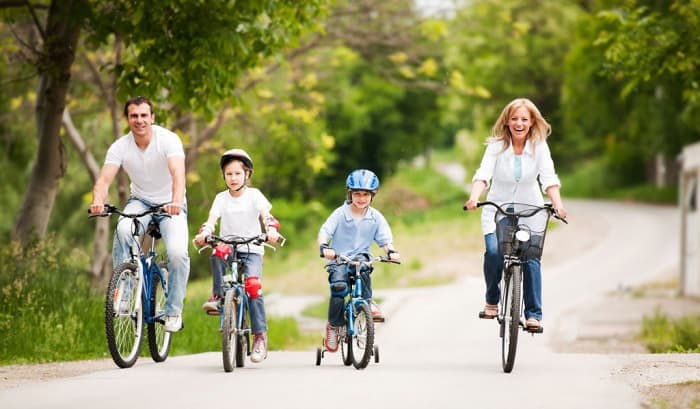
First of all, encourage kids to concentrate on balance. The child does not need to pay attention to the pedals. Then simple steps should be followed:
- Sit the child on the bike’s seat. The child must stand over the bike with feet flat. Tell him to make small jerks with his feet, as if walking. Your baby should watch the vehicle’s controls as he does this;
- Tell your child to take wider steps and push off harder. Now, this process should resemble not walking, but running;
- When the child is good at the previous action, you can start pedaling. Here he will need time to keep his balance and pedal at the same time. However, the training wheels will do the job. At the moment of the first wobble, this device can easily pick up and hold the child.
Training wheels are a temporary device on the kid’s bike. Children often get used to the extra help and don’t want to learn to ride without training wheels. If you ride with them for a long time, the training wheels wear out. To prevent this, you need to get rid of them in time.
If your child is still having trouble balancing after removing the device, offer him/her some time to ride a bike without using the pedals. When your kids’ biking is comfortable, you can start using the pedal bike and it will be the real training begins. If you want your child to gradually and painlessly transition to a pedal bike, training wheels work.
It’s a great idea to explain how the brakes operate before you start using pedal bikes. Children’s pedal bikes frequently have basic coaster brakes that need pedaling backward to engage.
How to wean your child off training wheels
When your kid has mastered riding a bike with training wheels, don’t rush to get on a pedal bike right away. After skipping training wheels you can master the balance bike until your child develops a firm sense of balance.
After that, you can safely move on to a pedal bike. If you do not have a balance bike, simply disconnect the pedals from your bike. If your child does not want to ride without pedals, then you can raise the training wheels high so they tilt from side to side. This will help your child learn to balance while riding. To teach balance, you must constantly encourage kids for their efforts and remind them not to bend to the side.
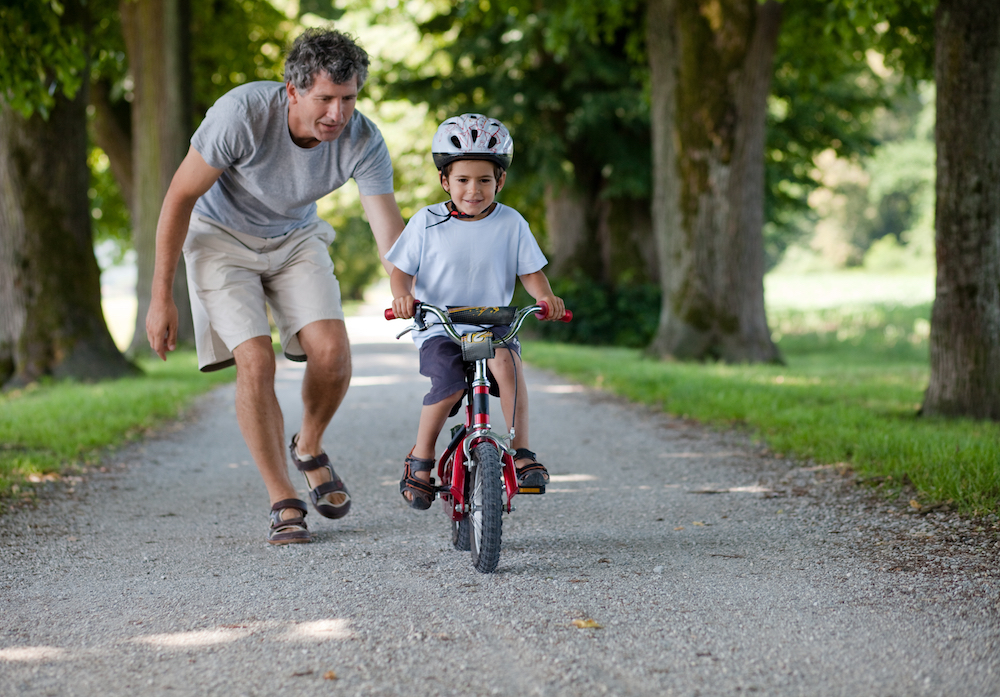
Are training wheels good?
Training wheels have been well-known to all of us from our childhood. After all, everything starts with small steps, and most professional cyclists have mastered their skills thanks to this device.
Today some people think training wheels are outdated, while others are more conservative and don’t want to change tradition. Modern parents have a choice: teach their child to ride a bike with bicycle training wheels or a balance bike.
The advantage of a balanced bike is that children can start riding this vehicle at an earlier age. So, if you put your child on a balance bike at 18 months of age, he or she will learn to ride a pedal bike by the age of 2.5. And all this happens without tears, injuries, or tantrums.
If you choose bicycle training wheels to teach your child to ride a bike, you need to consider the fact that they are not suitable for moving on uneven surfaces. If on a level road rider feels uneven, bumps and potholes in the path can be a serious reason for the vehicle to tip over. Such cases are very frustrating for most kids and discourage them from riding a bicycle.
Balance bikes VS training wheels
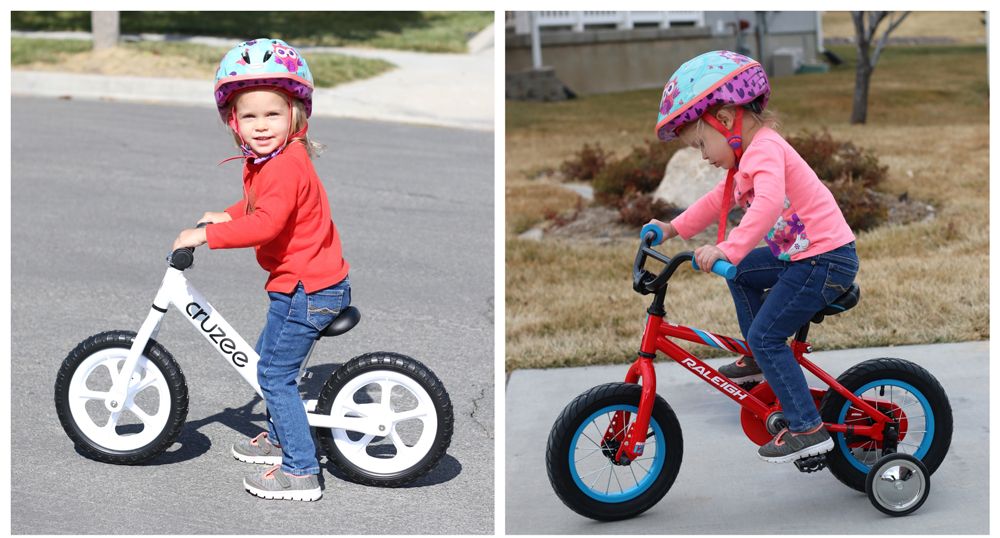
Of course, the balance bike is much better than a bike with training wheels. It is a good idea for younger kids. 1.5-year-old kids learn to ride them. Balance bikes train kids to keep their balance, ride fully, and pedal.
A balance bike is better than a training wheels bike:
- it is easy to handle. A child can ride a balanced bike for long distances;
- balance bikes allow for fun and learning to ride on their own;
- a child who has ridden a balance bike tends, as a rule, to easier and faster switch to a pedal bike.
However, don’t be disappointed and devalue the value of training wheels. They are also good as a temporary aid to prepare the cyclist for serious adult riding on a pedal bike.
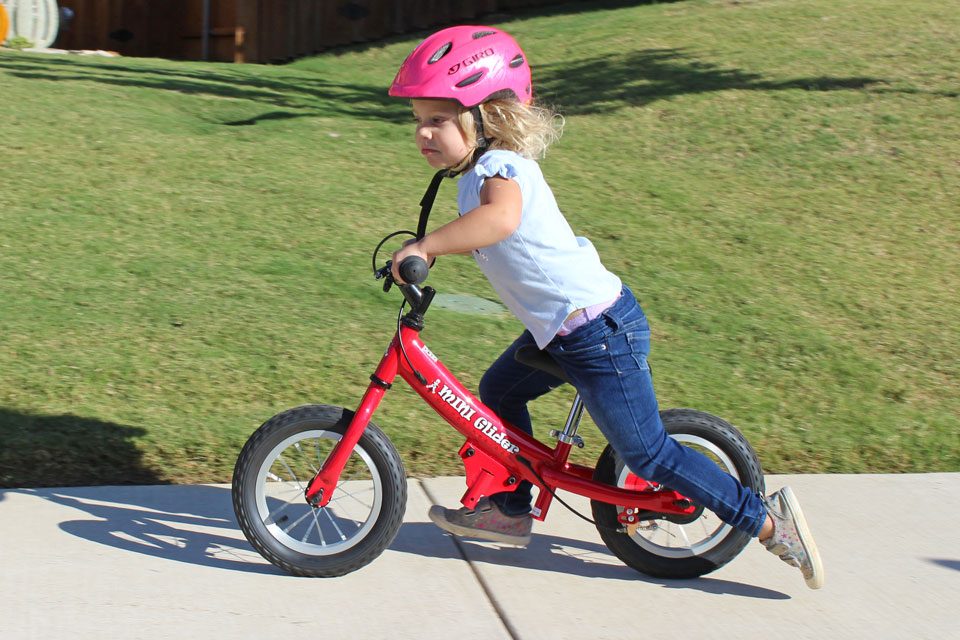
Conclusion
Maintaining balance while kids learning to ride a bike, training wheels show impressive results. Balance bikes are also in demand. Balance bikes are good because after them the child is ready to immediately move to a pedal bike. However, training wheels help kids stay upright on a bicycle and have a huge advantage over balance bikes in terms of teaching children how to pedal. If your choice is training wheels, you should know that it will take a longer time to teach your child.
Training wheels are a long-standing classic technology that has a lot of benefits for mastering the world of cycling. A balance bike is a modern solution. To keep the learning process from dragging on for too long, you need to get rid of training wheels in time. For children who find it difficult to balance, this solution will be preferable. Thus, we can conclude that both solutions are good and everyone chooses what he likes.
FAQ
What do you do with training wheels?
Training wheels allow kids to stay upright on the bike, after which they can transfer to a pedal bike and adapt to it more quickly.
Is it good to use training wheels?
There is an opinion among today’s parents that learning to ride a child on a kids bike with training wheels is not the best idea. Nevertheless, this device works effectively and helps kids learn to ride bikes with training wheels and get on a pedal bike quickly. From this, we can conclude that training wheels are a great way to learn the cycle and have great results.
Is the back wheel supposed to touch with the training wheels?
The training wheels should not touch the ground. They should be slightly above ground level. Also, the training wheels do not touch the rear wheel.
